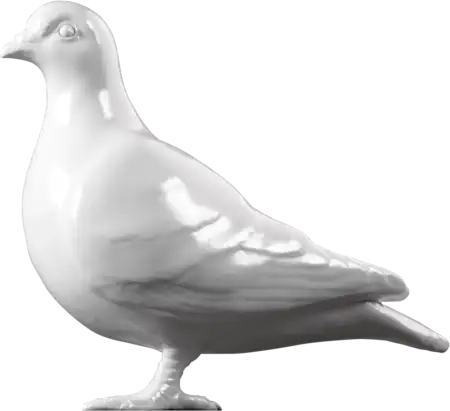Social History — C.1760
Baby house, dolls' house
This baby house was originally owned by Lady Anne Blackett, wife of Sir Edward the 4th Baronet. The Blackett family owed their fortune to coal and lead mining interests in Northumberland and County Durham.
Edward may have given his wife this miniature house as a gift to celebrate the birth of their son William and daughter Mary in 1758. The couple were married in 1751 and lived at Matfen Hall, Anne's family home in Northumberland. Anne (nee Douglas) had inherited Matfern Hall on the death of her Father two days after her christening in 1719.
They had two other children, twins also named Edward and Anne, who were born in 1752. The Blacketts were a landowning provincial gentry family, but also had links with London through Edward's involvement in commerce and politics. Edward served as MP for Northumberland between 1768 and 1774. The family frequently travelled south to their second home in Thorpe Lea, Surrey.
'Baby houses' as they were known in this period, were commissioned by wealthy families as social status symbols. They were often made as miniature replicas of real houses or featured elements of them. Baby houses were made for adults to display in drawing rooms rather than for children to play with in nurseries. Dolls' houses as toys were an advent of the late eighteenth century, although Anne's great-granddaughter Evelyn later recalled that even in her time, the Blackett children were not allowed to play with the baby house. In Anne's era parents would sometimes use these miniature houses to prepare their children for domestic life. She may have used it to educate her daughters in how to run a large country household.
The Blacketts' baby house is not based directly on Matfen Hall but provides an accurate picture of contemporary furnishings in a house belonging to a family of their social background. Elements of the façade do recall another Blackett family residence, Newby Hall at Ripon, Yorkshire. Aspects of the interiors also reflect the family's fashion-conscious tastes, which were no doubt encouraged by Edward's metropolitan connections. In the eighteenth century, London shops began to sell furniture and other accessories for dolls' houses. Some of the furnishings in this baby house are later additions, perhaps collected by Lady Anne or by her descendants. Others are more crudely made, presumably replacements for broken originals. Certain furnishings, such as the silverware in the dining room, are of disproportionate size to their surroundings adding a surreal quality to the interiors.
The baby house was given to the London Museum by Ida Blackett in 1912.
- Category:
- Social History
- Object ID:
- 37.13/1
- Object name:
- baby house, dolls' house
- Object type:
- Artist/Maker:
- —
- Related people:
- Related events:
- Related places:
- Production date:
- c.1760
- Material:
wood, silk, metal, glass, paper, papier-mâché, paint
- Measurements/duration:
- H 1485 mm, W 1850 mm, D 700 mm (as displayed open) (overall)
- Part of:
- —
- On display:
- —
- Record quality:
- 100%
- Part of this object:
- —
- Owner Status & Credit:
Permanent collection
- Copyright holder:
digital image © London Museum
- Image credit:
- —
- Creative commons usage:
- —
- License this image:
To license this image for commercial use, please contact the London Museum Picture Library.
